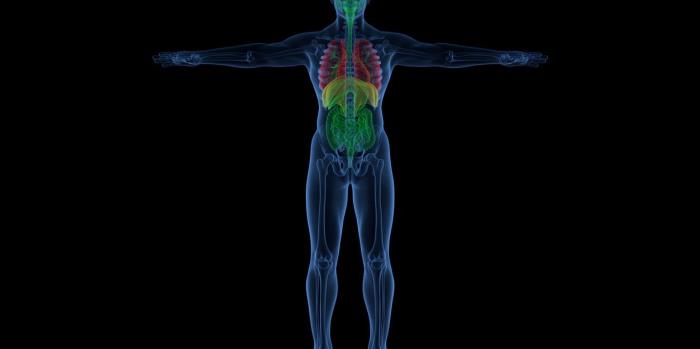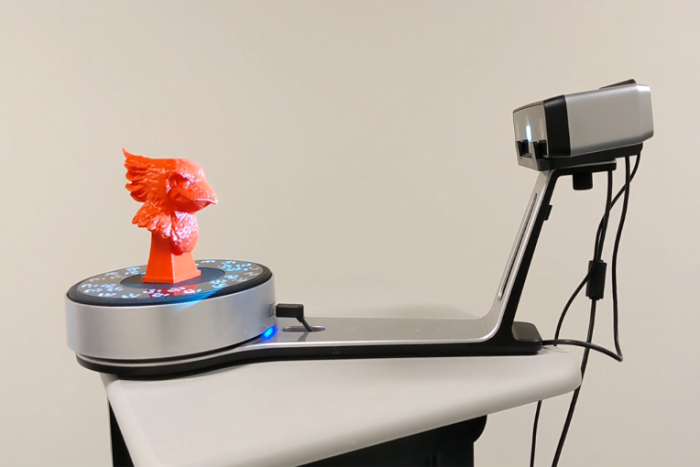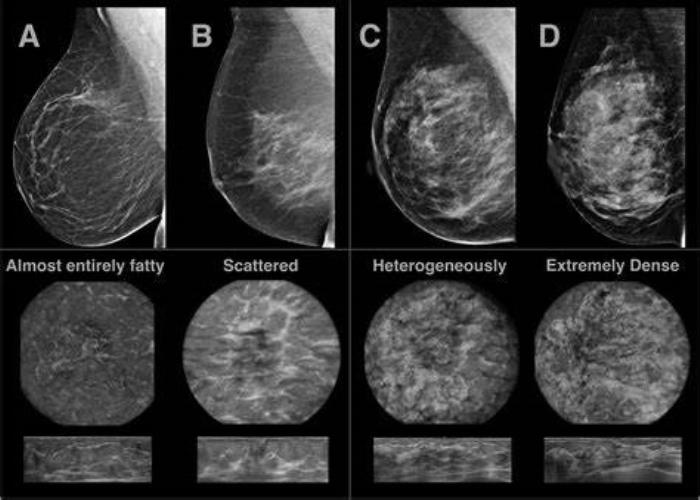Breast augmentation techniques have evolved significantly over the past few decades, transforming from simple surgical procedures into highly personalized and sophisticated options. Advances in technology have led to improved techniques, materials, and methodologies, enhancing both the safety and effectiveness of breast enhancement surgeries. Innovations such as 3D imaging, minimally invasive techniques, and customized implants have made it easier for patients to achieve their desired results while minimizing risks and recovery times.
Medical disclaimer: This content is for general awareness and does not replace a doctor’s consultation. For diagnosis or treatment decisions, consult a qualified specialist.
As patients become more informed and involved in their augmentation journey, the demand for technologies that aid in decision-making and improve aesthetic outcomes has risen. This evolution reflects a broader trend in cosmetic surgery toward greater precision, customization, and patient satisfaction.
What is 3D Imaging in the Context of Breast Augmentation?
3D imaging in breast augmentation refers to the use of advanced imaging technology to create a three-dimensional representation of a patient’s anatomy. This innovative tool allows both patients and surgeons to visualize the potential outcomes of breast augmentation procedures before any surgery takes place. By capturing detailed images of the breasts, 3D imaging helps in understanding individual anatomy and how different implant sizes, shapes, and placements may affect the final result.
This technology integrates computer-generated images that simulate various scenarios, helping patients grasp the aesthetic possibilities in a more tangible way than traditional 2D images or drawings.
Benefits of 3D Imaging for Patients and Surgeons
The benefits of 3D imaging extend to both patients and surgeons, enhancing the overall experience of breast augmentation. For patients, this technology provides a clearer understanding of their options, helping them make informed decisions regarding implant choices and surgical techniques. It can also help set realistic expectations by visualizing the potential outcomes, which can lead to greater satisfaction post-surgery.

For surgeons, 3D imaging facilitates more precise pre-operative planning by allowing them to assess a patient’s unique anatomy in detail. This level of detail improves communication with patients, fosters trust, and ensures that both parties are aligned in their goals for the surgery. Overall, 3D imaging enhances collaboration and promotes better outcomes.
How 3D Imaging Enhances Pre-Operative Planning
3D imaging significantly enhances pre-operative planning by providing surgeons with a comprehensive view of the breast structure, including skin quality, tissue thickness, and symmetry. This detailed visualization allows surgeons to tailor their approach, selecting the most appropriate implant type and size based on individual anatomical features.

Additionally, surgeons can simulate various implant placements—such as subglandular or submuscular positioning—and assess how each option affects the overall aesthetic result. This meticulous planning can help reduce surgical complications and improve the precision of the procedure, leading to more predictable and satisfying outcomes.
Visualizing Results: What Patients Can Expect
With 3D imaging, patients can visualize their potential results in a way that was previously unattainable. The technology allows them to see how different implant sizes and shapes will look on their body, providing a realistic perspective on what to expect post-surgery. Many 3D imaging systems can also simulate the aging of breast tissue and how implants may behave over time, giving patients a comprehensive view of their long-term results.
This capability helps patients feel more confident in their decisions, reducing anxiety related to uncertainty about the outcomes. Ultimately, the use of 3D imaging in breast augmentation serves as a powerful tool in bridging the gap between patient expectations and surgical realities, leading to a more satisfying overall experience.
The Technology Behind 3D Imaging Systems
3D imaging systems utilize advanced technology to create detailed three-dimensional representations of the human body, particularly useful in fields such as plastic surgery. These systems often employ techniques like stereophotogrammetry or structured light scanning to capture the surface of the body with high precision. The resulting images allow surgeons to visualize anatomy from multiple angles and assess various dimensions, enabling better planning and decision-making for procedures like breast augmentation. The technology enhances understanding and communication between the surgeon and the patient, leading to more tailored surgical outcomes.

Comparing 3D Imaging to Traditional Methods
Traditional methods of pre-surgical planning, such as 2D imaging and physical measurements, often provide limited information about a patient's unique anatomy. In contrast, 3D imaging offers a comprehensive view, allowing surgeons to evaluate contours and proportions accurately. While traditional methods can assist in general assessments, they lack the depth and realism that 3D imaging provides. By visualizing the patient’s body in three dimensions, surgeons can better anticipate how different implants will look and fit, ultimately leading to more informed decisions and enhanced patient satisfaction.
The Role of 3D Imaging in Customizing Implant Selection
3D imaging plays a crucial role in the customization of implant selection for breast augmentation procedures. By visualizing the patient’s anatomy in three dimensions, surgeons can assess various implant sizes, shapes, and placements more effectively. This technology enables personalized planning by helping to predict how specific implants will interact with the patient’s unique body contours. Consequently, patients can make informed decisions about their preferred aesthetic outcomes, leading to a higher likelihood of satisfaction with the final results.

Addressing Patient Concerns Through Visualization
Patient concerns about breast augmentation often revolve around size, shape, and the overall aesthetic outcome. 3D imaging systems can effectively address these concerns by providing realistic visualizations of potential results. By allowing patients to see how different implant options would look on their body, surgeons can facilitate discussions about expectations and outcomes. This enhanced visualization not only empowers patients in their decision-making process but also helps reduce anxiety, as they have a clearer understanding of what to expect from the procedure.
How 3D Imaging Can Reduce Surgical Risks
The implementation of 3D imaging in surgical planning can significantly reduce surgical risks by providing surgeons with detailed anatomical insights. By accurately assessing the patient’s unique body structure, surgeons can plan incisions and implant placements with greater precision. This enhanced understanding minimizes the likelihood of complications such as asymmetry, incorrect implant size, or placement issues. Additionally, the ability to visualize the procedure in advance allows for better communication among the surgical team, ultimately leading to a more efficient and safer surgical experience.
The Importance of Patient Education in the Planning Process
Patient education is a vital aspect of the surgical planning process, particularly in breast augmentation. 3D imaging technology serves as a powerful educational tool, allowing patients to visualize their options and understand the implications of their choices. By fostering informed discussions between patients and surgeons, 3D imaging enhances the overall experience and ensures that patients are more involved in their treatment planning. This collaborative approach not only improves patient satisfaction but also helps in setting realistic expectations regarding the outcomes of the surgery.
Integrating 3D Imaging into the Consultation Process
Integrating 3D imaging into the consultation process enhances the overall experience for both patients and surgeons. During initial consultations, surgeons can utilize 3D imaging to demonstrate potential results based on the patient's unique anatomy and desired outcomes. This integration allows for interactive discussions about different implant sizes and shapes, providing patients with a clearer picture of what to expect. Additionally, this technological approach fosters a more personalized connection between the patient and the surgeon, contributing to a more trusting and collaborative relationship.
How Accurate Are 3D Imaging Predictions?
The accuracy of 3D imaging predictions in breast augmentation is generally high, thanks to advanced algorithms and high-resolution imaging technology. Studies have shown that 3D imaging can reliably predict postoperative outcomes, particularly regarding breast volume and overall shape. However, it is important to note that while 3D imaging offers a valuable representation, individual healing processes, tissue characteristics, and surgical techniques can influence final results. As such, while 3D imaging is a powerful tool, it should be considered as part of a broader set of factors influencing surgical outcomes.
Case Studies: Success Stories Utilizing 3D Imaging
Numerous case studies illustrate the success of 3D imaging in breast augmentation procedures. For example, patients who underwent 3D imaging-guided surgeries often reported higher satisfaction levels due to the precision in achieving their desired aesthetic results. One case highlighted a patient who had significant anxiety about the procedure; through 3D imaging, she was able to visualize various implant options and choose one that best aligned with her goals. Post-surgery, she expressed immense satisfaction with the outcomes, attributing her confidence in the decision-making process to the use of 3D imaging.
Limitations of 3D Imaging in Breast Augmentation
While 3D imaging provides valuable insights for breast augmentation, it does have limitations. One primary constraint is the inability to predict how individual skin and tissue will respond post-surgery, as healing processes can vary significantly among patients. Additionally, 3D imaging may not account for factors such as changes in weight or hormonal fluctuations that could affect breast appearance over time. Furthermore, the technology relies on the surgeon's interpretation, meaning that the effectiveness of the imaging is dependent on the practitioner's experience and expertise. Thus, while 3D imaging is a useful tool, it should be complemented by thorough clinical evaluations and patient discussions.
The Future of 3D Imaging in Cosmetic Surgery
The future of 3D imaging in cosmetic surgery looks promising, as advancements in technology continue to enhance its applications and capabilities. As 3D imaging becomes more accessible and affordable, it is expected to be integrated into various surgical specialties beyond breast augmentation, such as facial aesthetics and body contouring. Future innovations may include real-time imaging and augmented reality features, allowing surgeons to visualize procedures as they happen. Furthermore, incorporating artificial intelligence into 3D imaging could improve predictive accuracy and tailor surgical plans even more precisely to individual patient needs, ultimately leading to better patient satisfaction and outcomes.
Patient Testimonials: Experiences with 3D Imaging
Patient testimonials regarding 3D imaging in cosmetic surgery often reflect enhanced satisfaction and confidence in their surgical choices. Many patients express relief after experiencing the technology during consultations, noting that the visualizations helped clarify their options and set realistic expectations. For example, one patient shared that seeing a 3D representation of her post-surgery appearance eased her anxiety, allowing her to make an informed decision about implant size and shape. Another testimonial highlighted how the detailed imaging allowed for a collaborative approach with the surgeon, ultimately leading to a result that exceeded their expectations. Overall, patient experiences indicate that 3D imaging significantly improves the pre-surgical process and outcomes.
How to Prepare for a Consultation with 3D Imaging
Preparing for a consultation that includes 3D imaging involves a few key steps to ensure you maximize the benefits of the technology. First, it is essential to gather any relevant medical history, including previous surgeries, medications, and allergies. Additionally, having a clear idea of your aesthetic goals and desired outcomes will facilitate more productive discussions with your surgeon. Patients should also consider bringing reference images to help communicate their expectations effectively. Finally, be prepared to ask questions about the imaging process and how it will influence your treatment plan, as this will help you gain a thorough understanding of the upcoming procedure.
Understanding the Costs Associated with 3D Imaging
The costs associated with 3D imaging in breast augmentation can vary depending on the clinic, geographic location, and the specific technology used. Generally, patients can expect to pay anywhere from ₹5,000 to ₹15,000 for a 3D imaging session, which may be included in the overall consultation fee or charged separately. While this may seem like an additional expense, the benefits of improved surgical planning and personalized outcomes often justify the cost. It is advisable to discuss pricing transparently with your surgeon and understand whether 3D imaging is part of the overall surgical package.
Conclusion: The Impact of 3D Imaging on Breast Augmentation Outcomes
3D imaging has profoundly impacted breast augmentation outcomes by enhancing pre-surgical planning and patient communication. By providing realistic visualizations, this technology empowers patients to make informed decisions about their cosmetic goals while enabling surgeons to tailor procedures to each individual’s anatomy. The incorporation of 3D imaging into the surgical process not only helps mitigate risks and complications but also leads to higher satisfaction rates among patients. As technology continues to advance, the role of 3D imaging in cosmetic surgery is expected to expand, further revolutionizing how surgeons approach aesthetic enhancements.
Benefits of Fat Grafting for Breast Augmentation
Explore the numerous benefits of fat grafting as a method of breast augmentation, including its natural results, lower risk of rejection, and dual benefit of body contouring. Fat grafting utilizes the patient’s own fat cells, providing a more organic look and feel while enhancing breast volume and shape.
Diagnosing Breast Issues: When to Consider Augmentation
Understand when to consider breast augmentation by exploring various breast issues such as asymmetry, volume loss after weight changes, or developmental anomalies. This section discusses the signs and symptoms that may indicate a need for augmentation, empowering you to make informed decisions about your breast health and aesthetic goals.
Best Breast Augmentation Surgery in India
The Best Breast Augmentation Surgery in India offers patients a chance to enhance their body shape and confidence, using advanced techniques to ensure natural-looking results tailored to individual preferences.
Best Breast Augmentation Hospitals in India
The Best Breast Augmentation Hospitals in India are equipped with state-of-the-art technology and highly trained medical staff, ensuring a smooth and safe surgical experience with comprehensive post-operative care.
Breast Augmentation Surgery Cost in India
The Breast Augmentation Surgery Cost in India is competitively priced, offering high-quality services and care at affordable rates, making it accessible to a wide range of patients.
Best Breast Augmentation Surgeons in India
The Best Breast Augmentation Surgeons in India have years of experience and expertise in breast enhancement, delivering personalized treatments to ensure the best possible outcomes for every patient.
FAQ
How does 3D imaging improve breast augmentation planning?
3D imaging enhances breast augmentation planning by providing accurate, three-dimensional visualizations of a patient’s anatomy, allowing surgeons to assess implant sizes, shapes, and placements more effectively.
Are the results predicted by 3D imaging always accurate?
While 3D imaging predictions are generally accurate, individual healing processes and tissue characteristics can affect final outcomes. Thus, while useful, these predictions should be considered alongside other factors influencing surgical results.
What should I expect during a 3D imaging consultation?
During a 3D imaging consultation, you can expect a discussion of your aesthetic goals, followed by the imaging process, where a scanner captures your body's contours to create a realistic 3D representation. This will be used to discuss potential implant options.
How does 3D imaging influence the type of implants chosen?
3D imaging allows for a personalized assessment of how different implant sizes and shapes will complement your unique anatomy, aiding in selecting the most appropriate implants to achieve your desired aesthetic outcomes.
Is 3D imaging a standard part of breast augmentation procedures?
While 3D imaging is not yet universally standard in breast augmentation procedures, it is becoming increasingly common as more clinics adopt this technology to improve surgical planning and patient satisfaction.